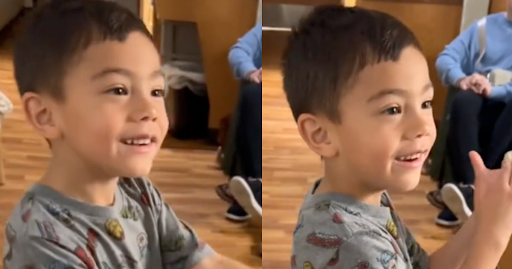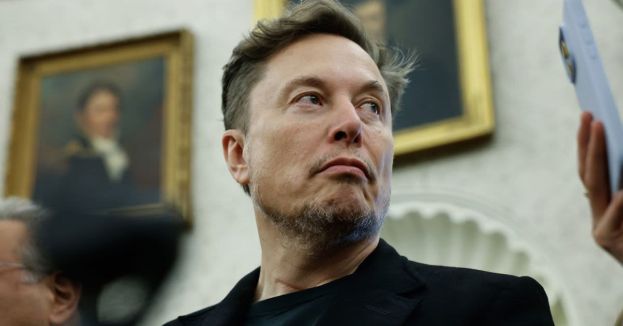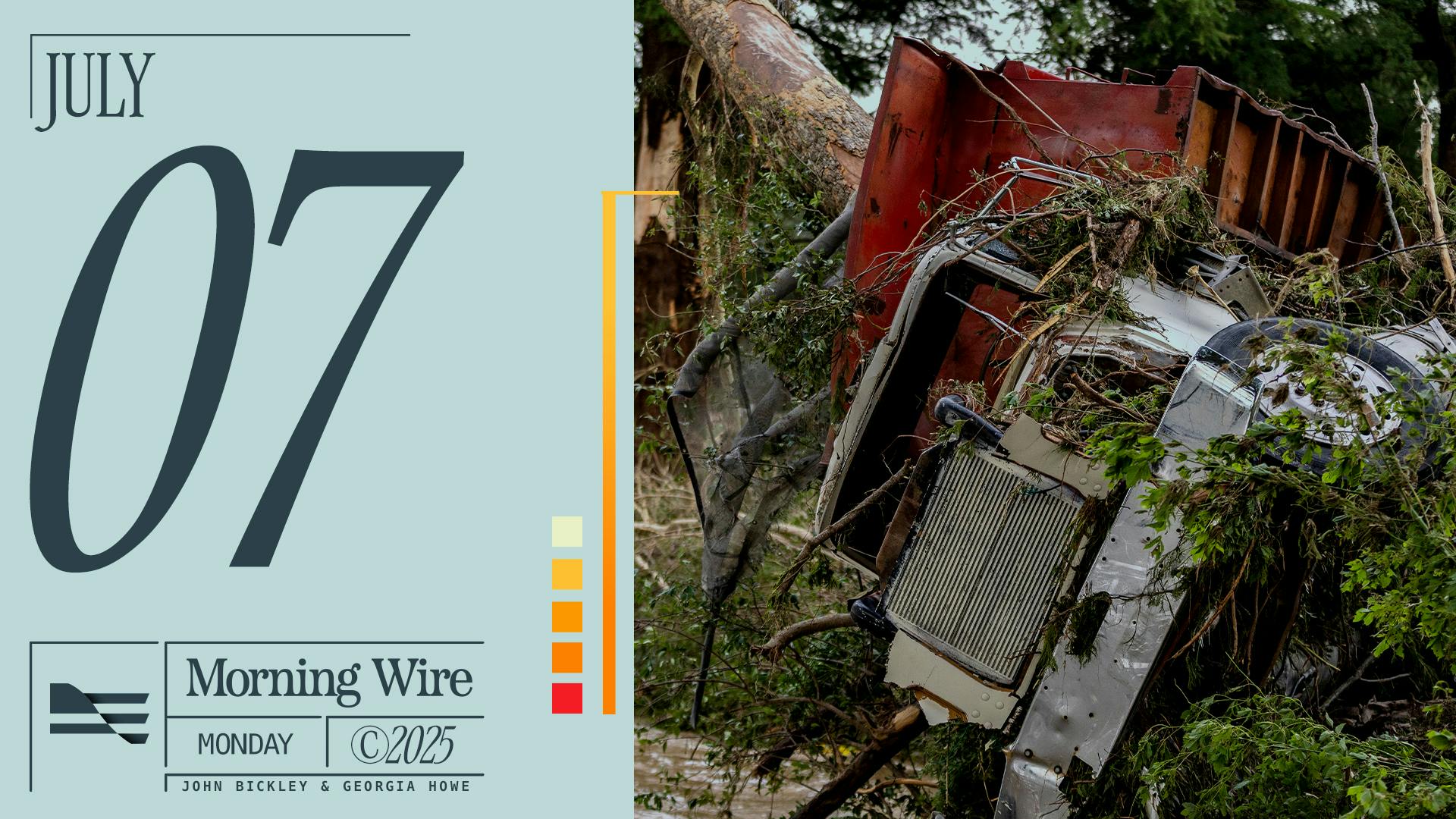
www.dailywire.com
Morning Brief: Tragedy In Texas, Trump’s Big Win & The Mamdani Effect
Catastrophic flash floods kill dozens in Texas. What exactly is in Trump’s One Lovely Law? Plus, New Yorkers are beginning to wake up to the possibility of a socialist mayor.
It’s Monday, July 7, and this is the news you need to know to start your day.
Morning Wire is available on video! You can watch today’s episode here:
If you’d rather listen to your news, today’s edition of the Morning Wire podcast can be heard below:
Tragedy In Texas
Topline: Catastrophic flooding has killed at least 82 people in Central Texas, including 28 children. Officials describe the situation as a once-in-a-century event.
Dozens are still missing in Central Texas after flash floods caused the Guadalupe River to surge early in the morning on Independence Day – an especially popular time for camping. In many cases, people didn’t realize the danger until the water had already reached their beds. Kerr County, west of Austin, was the hardest area hit – where the river rose 26 feet in just 45 minutes.
The episode that has garnered the most national attention is the Camp Mystic case– a Christian, all-girls camp in Kerr County. Every year, hundreds of girls visit to camp by the river and participate in a spiritual retreat. The flood caught the camp by surprise, and dozens of campers and counselors were killed, and at least 11 girls are still missing.
Hundreds of volunteers have turned out in each of the affected counties and are helping officials comb through the debris and mud for any sign of missing persons. Due to the flood damage to roads, helicopters have become indispensable.
“There’s about half a dozen helicopters with all volunteers,” Gary Heavin, a pilot with the disaster response charity organization Operation Helo, told The Daily Wire. “We’re flying National Guard out… fire department, all sorts of emergency rescue people.. They trudge along in the debris because a lot of times the bodies will be caught in the debris… hopefully, we also get to find people that are alive and bring them back.”
Heavin said they’ve also gotten some outside help from the federal government and Elon Musk. Musk sent Starlink devices to the impacted areas for use by first responders. Department of Homeland Security Secretary Kristi Noem has been on the ground to provide assistance wherever it’s needed. President Donald Trump also signed a disaster declaration on Sunday, making additional resources available for emergency response.
Inside The Big Bill
Topline: After months of heated debate, President Trump’s so-called “Big, Beautiful Bill” is now the law of the land.
President Trump’s July 4 deadline for passing his “Big, Beautiful Bill” looked implausible at the end of last week, because House Speaker Mike Johnson (R-LA) had promised members they would have 72 hours to review the changes made by the Senate – but when it became clear that timeline would push the vote past Trump’s deadline, he changed course and started the vote on July 3, when it passed 218 to 214.
That allowed President Trump to sign his signature legislation from the White House lawn on Independence Day, complete with a band blasting patriotic tunes and a flyover from B-2 bombers — an apparent nod to last month’s strikes on Iran. President Trump has made it clear that he views this bill as a means of codifying many of his campaign promises and delivering to the American people what they voted for in November.
“We delivered no tax on tips, no tax on overtime and no tax on social security for our great seniors,” Trump said, claiming that the newly signed legislation is “the biggest bill of its kind ever done by far…It makes the child tax credit permanent for 40 million American families.”
Among other things, the “Big, Beautiful Bill” allows taxpayers to write off interest payments on car loans, and it establishes new “Trump accounts” for babies born between 2025 and 28 — those will include a one-time $1000 federal contribution to an investment fund on the child’s behalf. From there, families can contribute up to $ 5,000 annually, and the funds can be withdrawn once the individual is 18.
The bill will put $46 billion towards the construction of the border wall, and tens of billions more towards deportation efforts.
In order to offset the massive tax cuts, the bill includes around a trillion dollars in reductions to entitlements like Medicaid over the next decade, and will add work requirements for able-bodied Medicaid applicants aged 18-64 – going forward, people in that cohort will have to work at least 80 hours a month to qualify, or prove that they’re actively looking for work, and once they’ve enrolled they’ll have to prove they still qualify for benefits every six months.
Democrats say this will force millions of Americans off of Medicaid and cut funding to hospitals nationwide.
On the other side, Republicans say Medicaid has become bloated in recent years with folks who are taking advantage of the system. They note that Medicaid enrollment increased significantly during the COVID pandemic, when continuous enrollment was implemented. Eight million people were added to the program in the last four years alone, while disenrollments were put on pause.
The Mamdani Effect
Topline: New York City elites are panicking about the prospect of Zohran Mamdani becoming mayor and enacting his socialist policies.
A few weeks after his upset victory in New York City’s Democratic mayoral primary, critics of outspoken socialist Zohran Mamdani – from high-ranking Democrats and finance and tech figures to bodega owners and cops – are sounding the alarm about what his policies might do to America’s largest city. During the campaign, Mamdani focused on the high cost of living in New York City and proposed several schemes to bring it down, including, among other things, government-run grocery stores and rent control. Mamdani has also pledged to raise taxes on wealthier and “whiter” neighborhoods to fund his reforms, and has stated that he “[doesn’t] think billionaires should exist.”
Billionaire hedge fund manager Bill Ackman is throwing his full endorsement and financial weight behind current Mayor Eric Adams. Ackman called Mamdani a socialist/communist and said his policies would be “catastrophic for NYC.” Previously, Ackman was considering funding a new challenger just to beat Mamdani and said he was ready to spend “hundreds of millions of dollars” backing a challenger.
The tech elite are also panicking. On election night for the primary, New York-based venture capitalists and crypto exchange founders melted down on X, posting messages like, “New York City on the brink of becoming Gotham City.”
The president of the Police Benevolent Association, Patrick Hendry, called Mamdani “anti-cop” and said he has an “extremist attitude and it’s going to scare other cops and they will go out the door.” In 2020, Mamdani was a vocal supporter of defunding the police. The NYPD is already having trouble recruiting and retaining officers — more than 1500 cops have quit this year — and with Mamdani’s anti-police stances, union officials are warning that his election would only make it harder to keep cops on the streets.
NYC bodega owners have also expressed concerns that Mamdani’s proposal for government-run grocery stores will put them out of business.
“Most bodega owners are immigrants,” Fernando Mateo, spokesperson for the United Bodegas of America, said. “They come here to try to make a living and do the right thing by the city… if you’re able to infiltrate government into the private sector, you’re basically ruining the dreams and the spirits of all these small businesspeople who have risked everything they have, borrowed everything they could borrow to open their small business.”
















